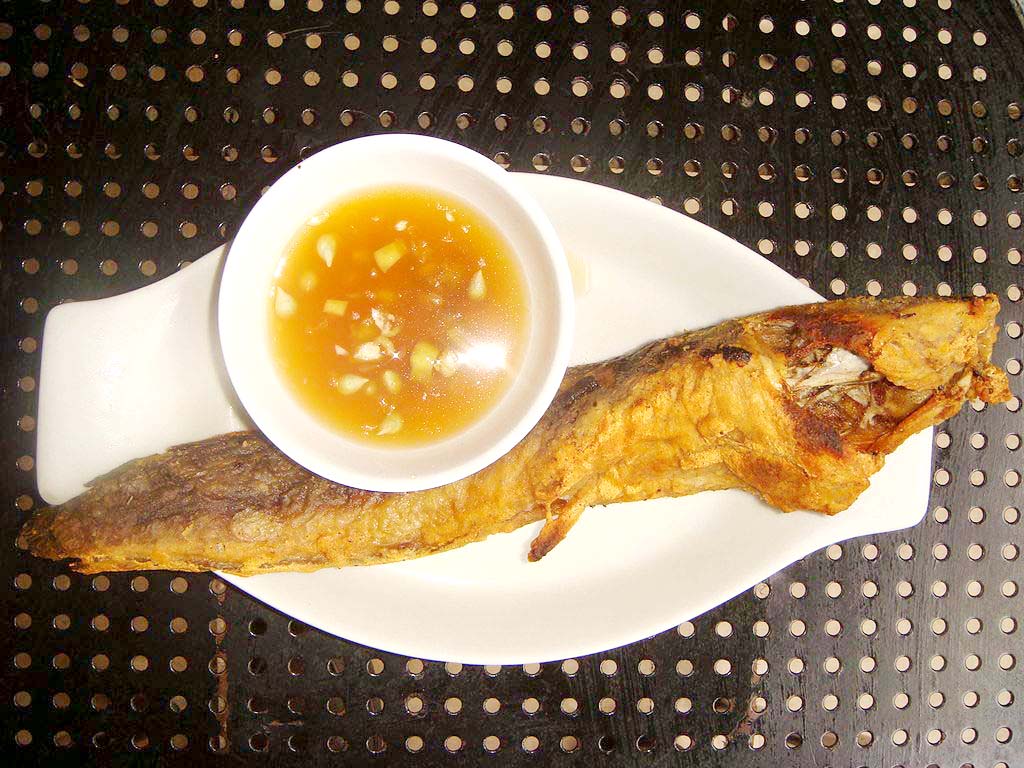As was the practice at the time, all kids had to know how to cook.
AT A GLANCE
Like many of my contemporaries, I was raised in a home shared by three generations. We had no maids. Relatives came to help and were in turn raised like members of the family. They were sent to school along with the children of the household.
Such was the case with distant cousin Gloria, who was taken in when her parents died. Raised in the interior barrio Salinas in Bacoor, Cavite, she was a real probinsyana, which I now realize was her best asset.
As was the practice at the time, all kids had to know how to cook. For starters, Gloria took me and my brothers to the market in Zapote on weekend mornings when we had no school. Zapote was—and still is—popular in the area for fresh fish from Batangas, Cavite, Rizal, and Laguna. Lowland vegetables were also brought in by farmers who sold to vendors from other markets.
From Gloria, I learned the names of fish from ponds, from oceans, and from the fresh waters of Laguna de Bay. She pointed out the stripes that distinguish malabansi from ayungin, the scales that identify cheap kapak from classy banak. We also became familiar with dozens of shellfish.

Pinakbet
Apart from knowing the names of all the fish in the market, I learned how much they cost and how best to cook each kind. I was patienty guided through the delicate process of killing hito (catfish) by sprinkling salt over its gills, then removing the slime from its body using ash from our wood-fired stove.
Because Lola made bagoong every week, we had to regularly clean the fresh alamang (small shrimp) one handful at a time. The same method was used to remove foreign objects from tiny dulong, which always ended up as pinangat or in omelets.

Hito (catfish)
Tips and secrets
The secret of smooth dinuguan with no lumps, Gloria showed us, was to mash the fresh blood with torn banana leaf minutes before pouring the blood into the seasoned cooked meat. But first, she made sure the fresh blood was unsalted. Salted blood would make dinuguan watery, she explained. Whenever possible, she cooked dinuguan one day before it was to be served to allow the flavors to penetrate the meat. More vinegar was added to achieve the right degree of sourness.
Thanks to her, our stuffed inihaw na bangus was never fishy. She sautéed the salted sliced onions and tomatoes before stuffing them into the raw fish, which had been slit along the back fin. Wrapped in banana leaf and grilled until the wrapping was almost scorched, the dish was savory and cooked through out, with no trace of fishiness. I use the same technique today with other fish as well.

Dinuguan
Seasons and reasons
During the rainy season when no fresh fish were available, we had to rely on dried salted fish. Most often it was dried dilis (anchovy) of various sizes. They were cheap, easy to store, and versatile. Gloria had the small ones either fried or toasted in a pan with no oil. The large dilis were rinsed well to reduce saltiness, their bellies and heads pinched off for better flavor and presentation as meat substitute in apritada, pinakbet, and ginataan. I still prepare these dishes today even when I have fresh fish on hand.
Dishes that last
We went to the market every morning and were taught ways to keep food for the next meals from spoiling. Meat and fish were often seasoned and dried in the sun or hung from the ceiling above the stove where smoke flavored and preserved them. Sometimes we had paksiw. The fish was cooked in vinegar, ginger, garlic, and chili pepper. Cooked properly, the paksiw could keep a few days. The same recipe, without vinegar, is pinangat, which Gloria cooked almost dry but kept moist with a few tablespoons of cooking oil or rendered pork fat.
Cooked viands that were good to eat for a couple of days were a must-learn from Gloria: kilawing puso ng saging, dinuguan, adobo, and bopis. She was very strict about clean spoons or laddles used in spooning food from the pot.
Future foodies
During summer vacations, Gloria helped us set up a small halo-halo stall by teaching us to make preserved fruits and leche flan. Thus, we sold the best halo-halo in our barrio by using the biggest number and most colorful ingredients: ube halaya, sweet beans, red mongo, bananas in syrup, kaong, gulaman, sweetened kamote, white beans, sago. The experience instilled in us a passion for food entrepreneurship.
I was in high school when Gloria did not come home from joining a Good Friday procession. She came home after a week with her boyfriend and his parents. They were married a few days later. Their three daughters all went into the food business, catering for birthdays, weddings, and special events in Las Piñas.
My brothers and I, her first students, used the skills we learned both at home and in our professional lives. Cris had a popular eatery at the town’s cockpit. Tony migrated to Japan and ran a bar/restaurant in Sakai City. I write about food.